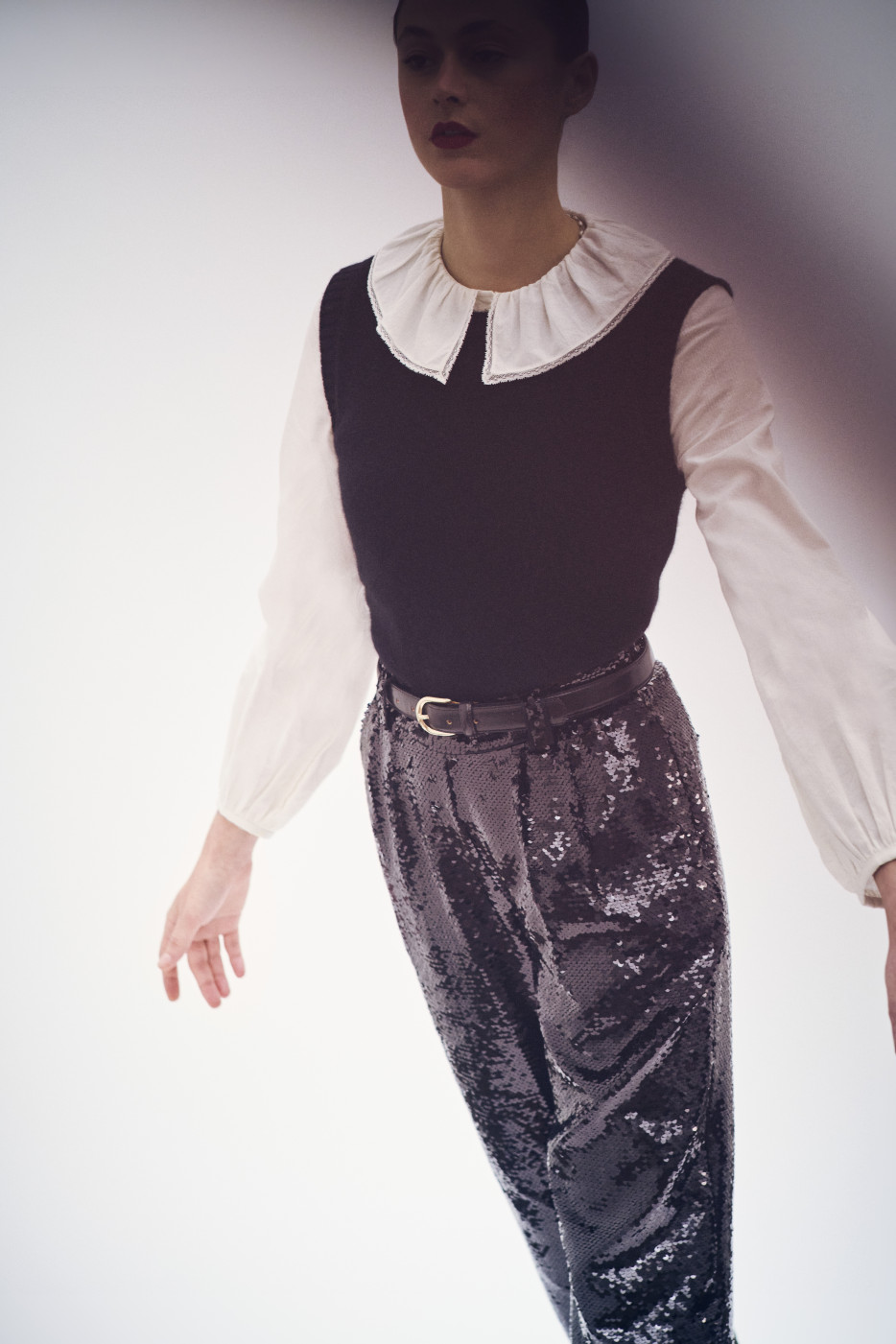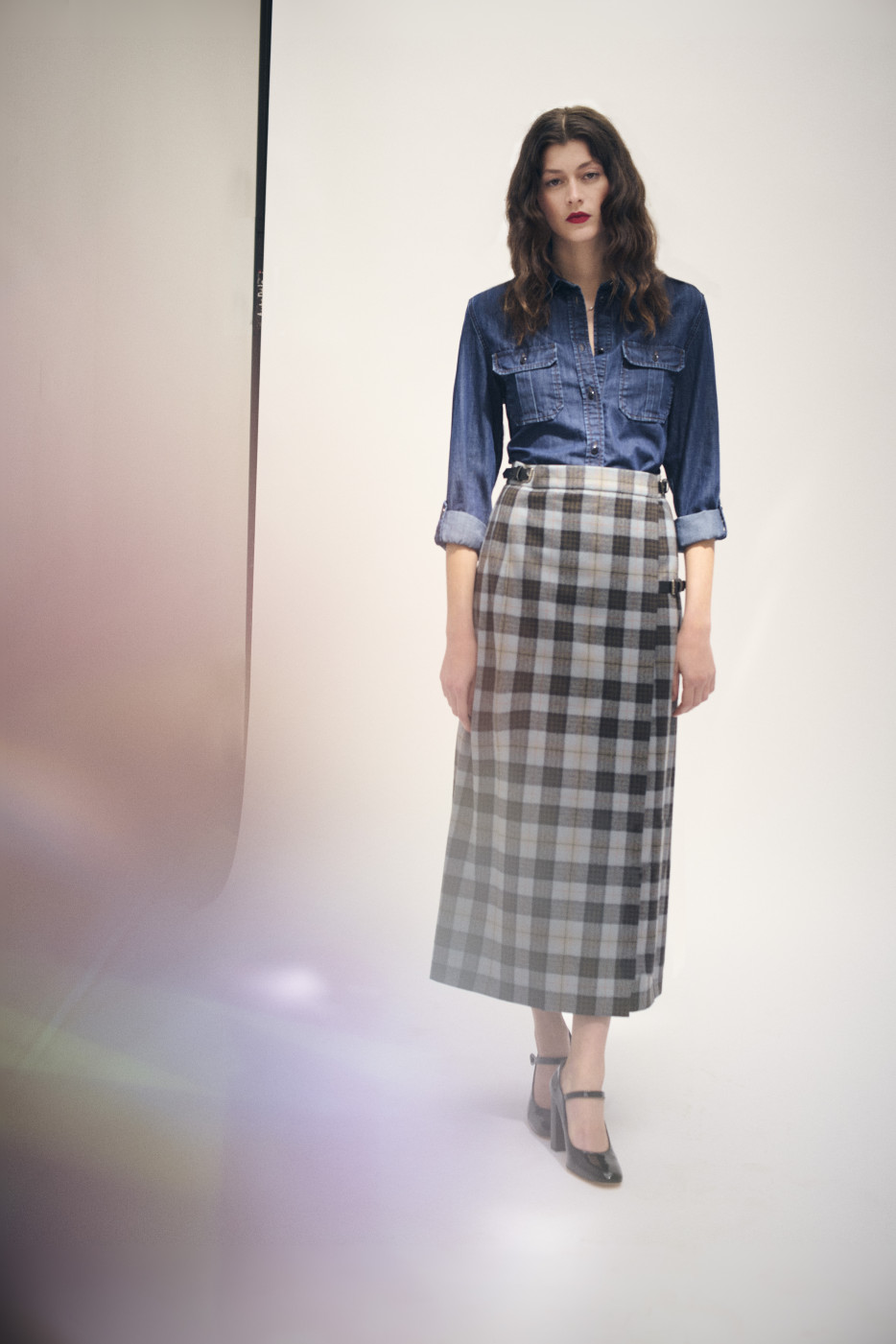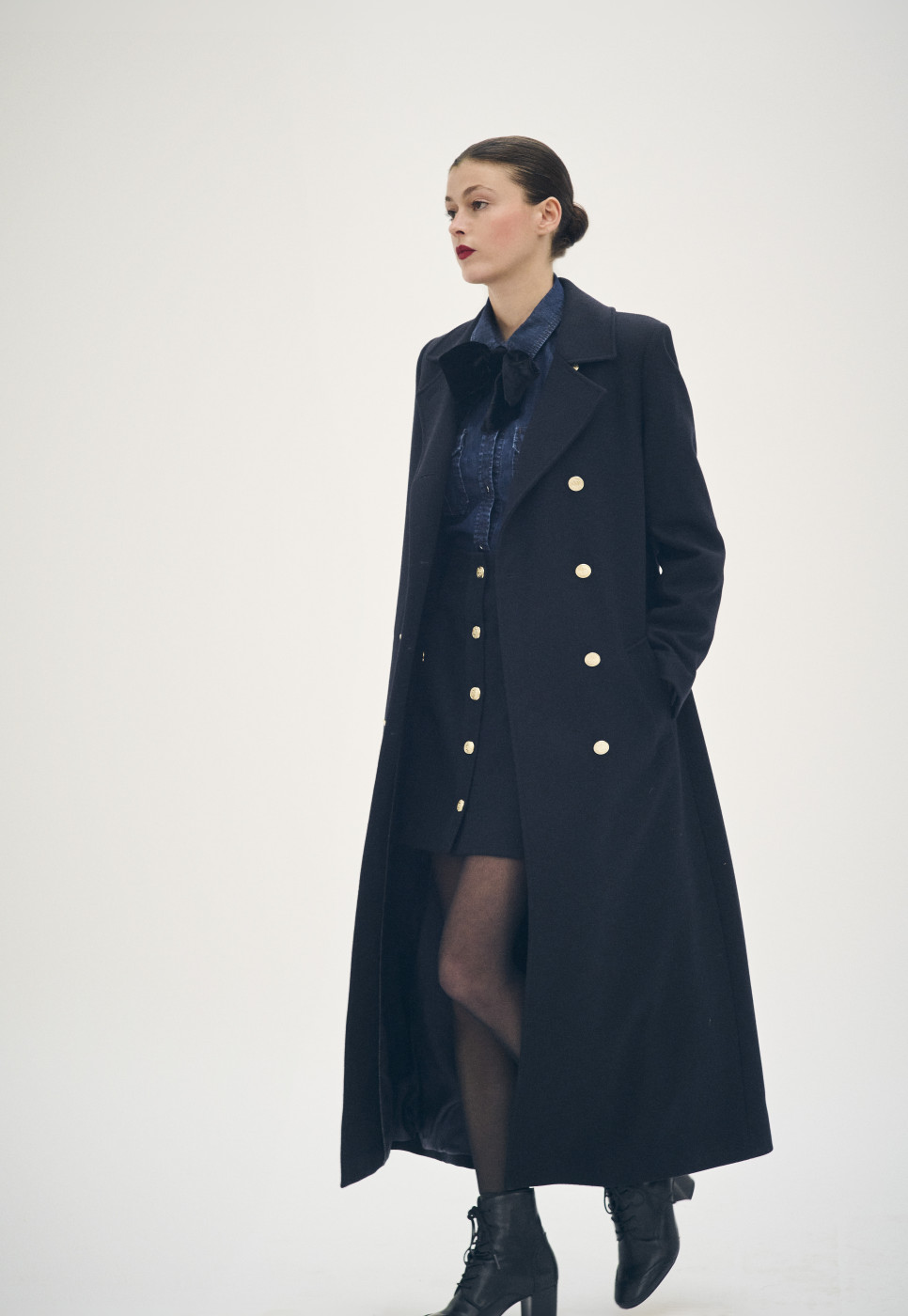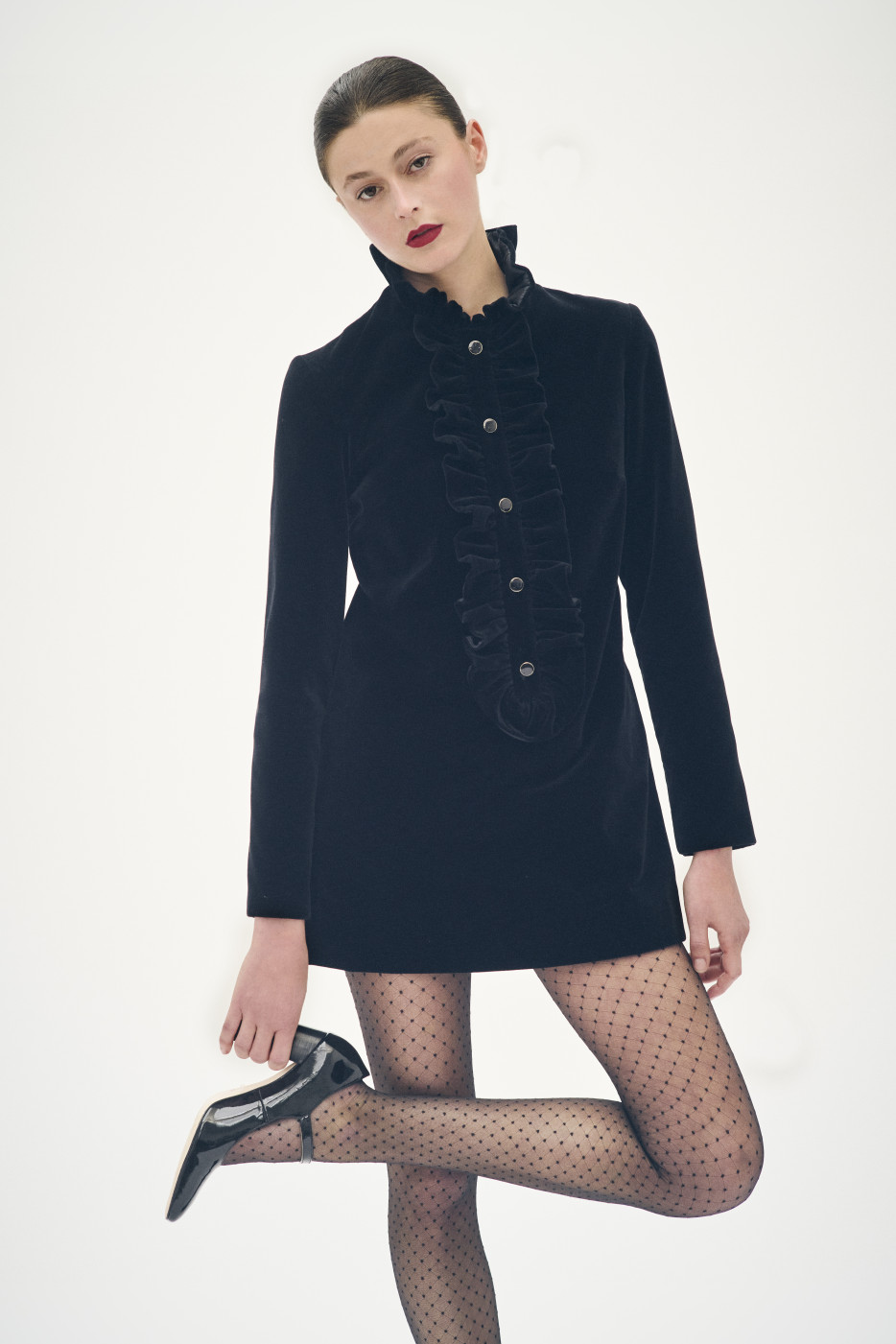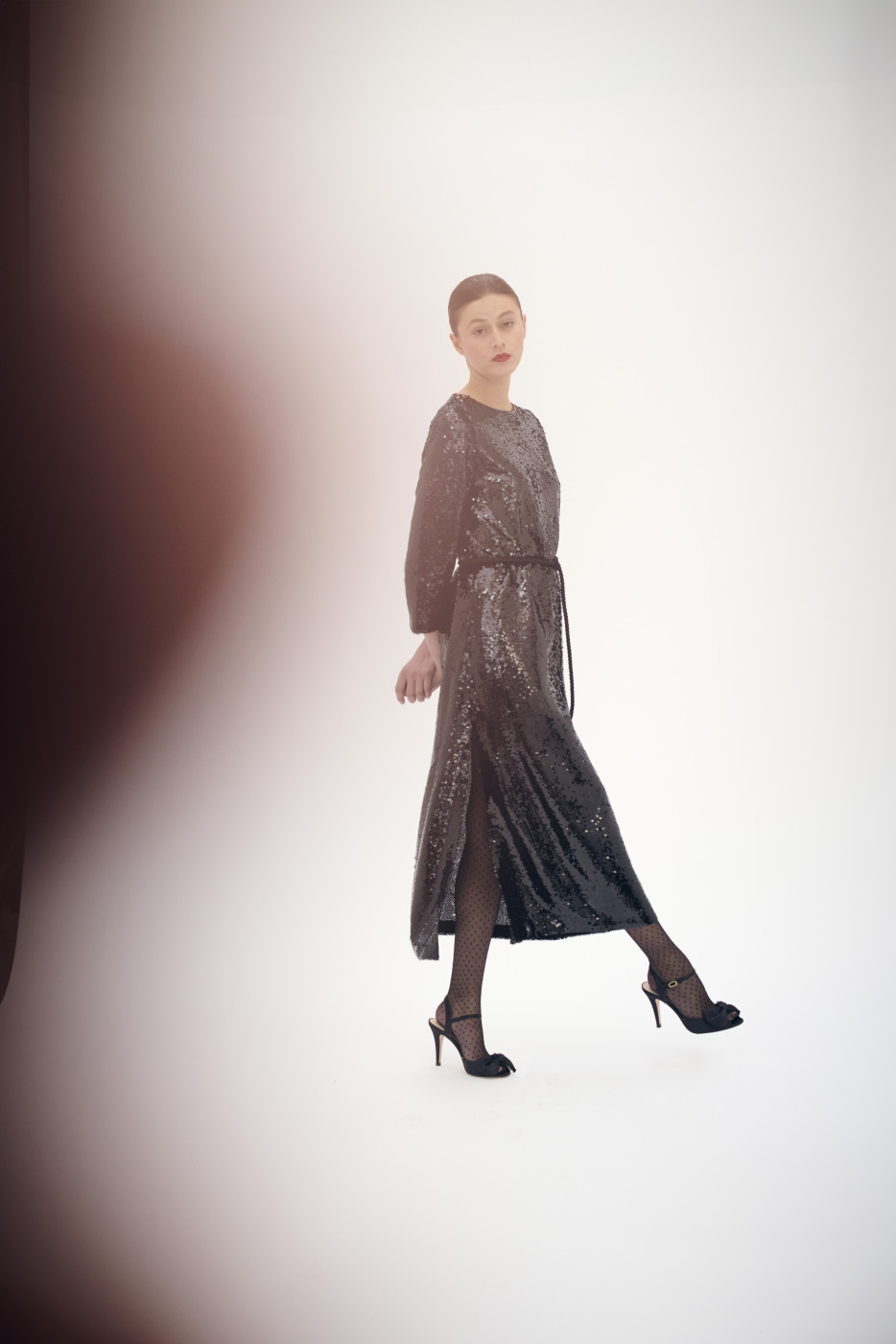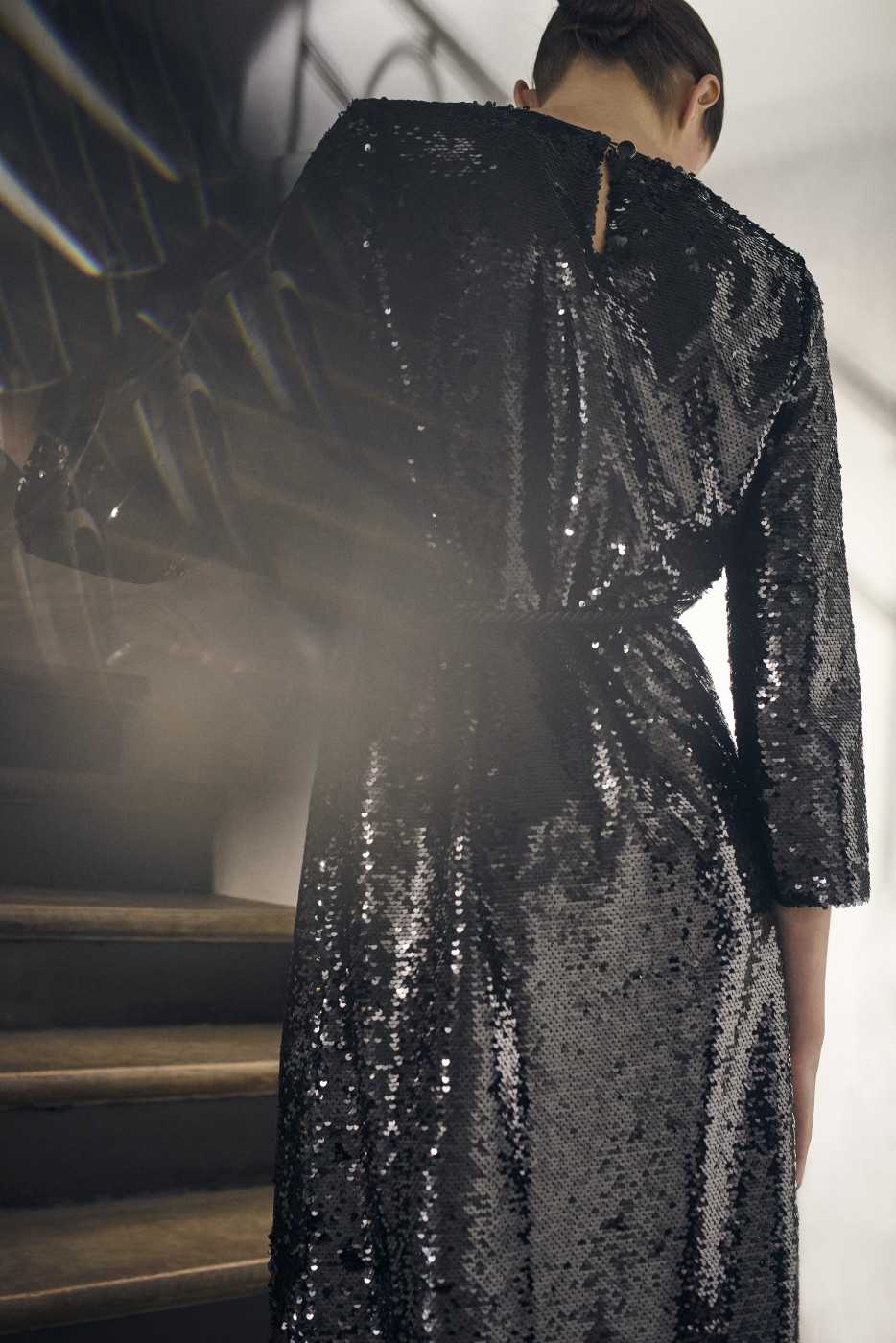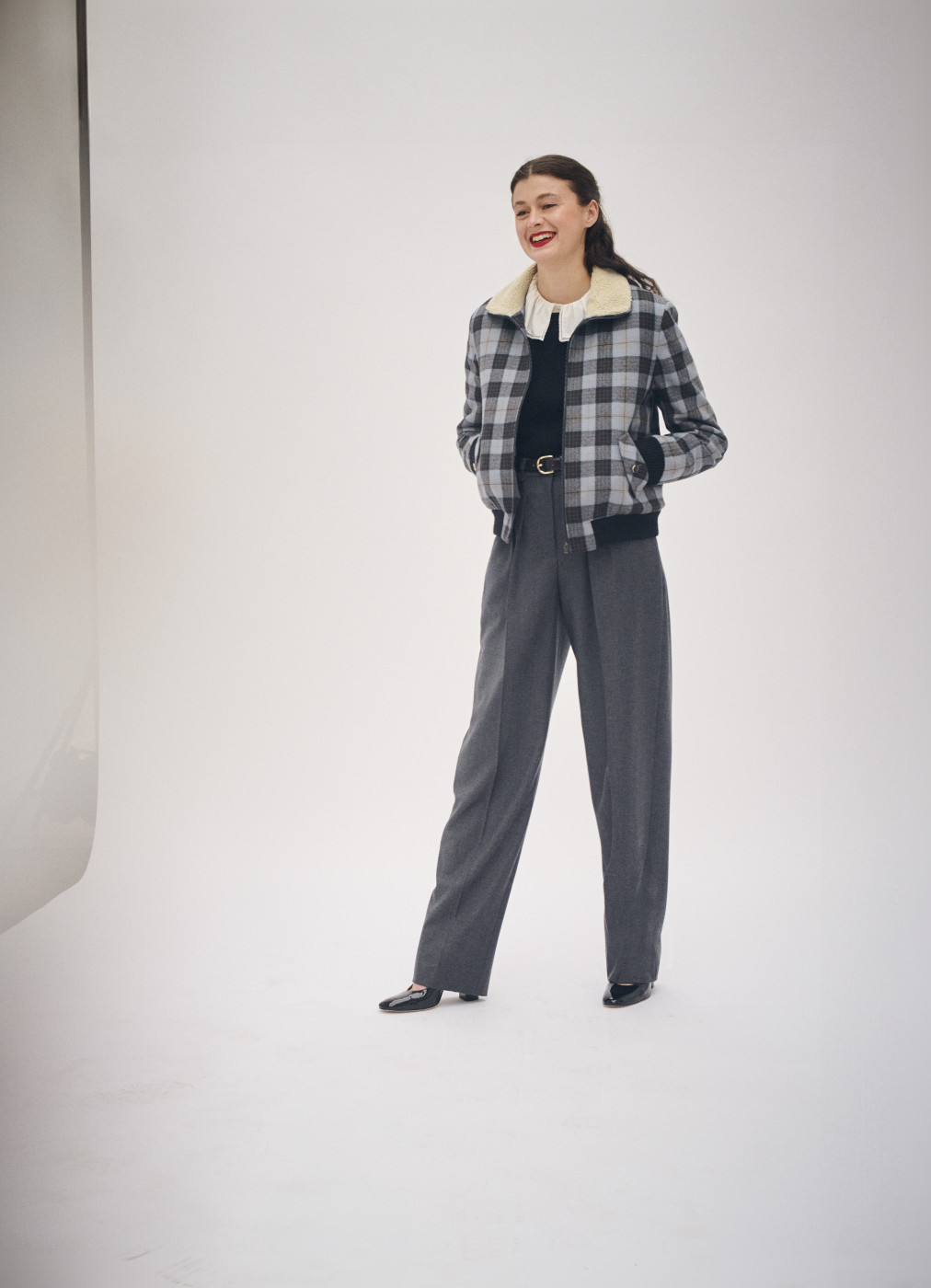
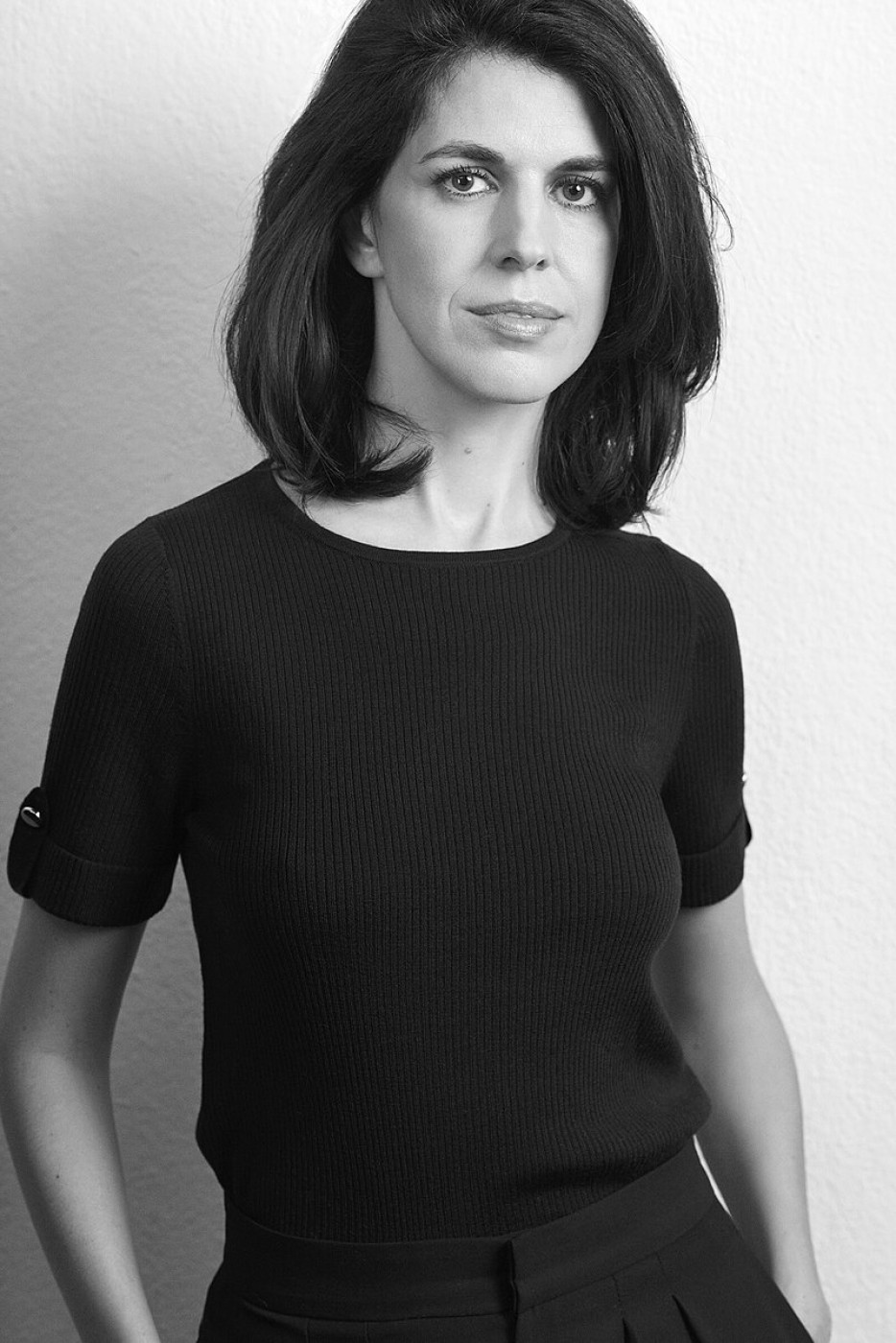
Parisian Love Story: Vanessa Seward’s take on Bonpoint
It’s a story about two Parisian fashion icons that come together. Argentine-born designer and painter, but a trueParisienne at heart, Vanessa Seward teamed up with Bonpoint, an expert in stylish and timeless childrenswear, to create a collection of poetic and practical womenswear pieces, ranging from daily wear to evening wear and accessories. Reminiscent of her 70s-inspired cult designs for her namesake label (that she shut down back in 2019) but with a strong Bonpoint identity, this wardrobe is much more than just clothes for adults or mothers: as Seward says it’s for everyone from teenage age and beyond who is in search of beautiful garments that one would love to wear a lifetime and maybe pass on to future generations. We caught up with Vanessa in Paris after fashion week to find out more about her unique take on Bonpoint classic codes, Parisian style and how she feels to be back in fashion after a four-year hiatus.
Could you tell us more about this new project and why you said “yes”?
I know the Bonpoint team well and we always thought that we should work together. It’s one of the Parisian houses that I really understand, so I had a vision for what a Bonpoint woman could look like, and trust me it’s not always like this in the creative process. So when they asked me, I said “yes” immediately, because I had a feeling that we could do it well. When I am working on a project, for me, it’s important to know that it could be a success. We started working together a year ago, and it was a secret until the launch of the collection this autumn.
Do you remember when you first heard about Bonpoint? What is your first Bonpoint memory?
I am an ardent admirer of Marie-France Cohen (founder of Bonpoint). I am lucky to know her personally, she is a fascinating woman! I feel like I have always known about the brand, and I think the first time I bought something at Bonpoint Boutique was when I was in my twenties. Imagine Paris in the 90s, there were not so many fashion brands at an accessible price point: everything was either bad and very cheap or good but very expensive. At the time, I was working as an accessories designer at Chanel under Karl Lagerfeld, and we had an insider’s secret: everyone would buy Bonpoint clothes in size 15 y.o. or 16 y.o., it was a great way to find accessible and beautiful basics.
In France, Bonpoint is not only a shop but a cultural institution, a symbol of French savoir-faire like Chanel or Dior. In your opinion, why is Bonpoint so important for the French?
Bonpoint has a very Parisian “je ne sais quoi”. It has this kind of irreverence, it could seem a bit classic and bourgeois but it has a twist, which is very Parisian. This is why Bonpoint is the premise of the Parisian style. People feel that. It’s not as boring as other children’s brands are. It has its nonchalance, reminiscent of the Parisian style.
Do you reference in your collection for adults the collection for the younger ladies? Are there any similarities?
I started designing the collection before I saw the current children’s collection, which was in the works. So I was thinking about Bonpoint's classic children's things, that I dreamed of having one day in my size. And I was also inspired by the fabrics and rich details. But in no way, did I want it to be a fancy dress! I didn’t want the Bonpoint woman to look as if she was wearing Bonpoint girls’ clothes but in the sizes for women. I wanted my womenswear to have a very strong Bonpoint identity, which it has, but at the same time to be real clothes and not little girls’ clothes for women. The shapes and cuts are very feminine, and a lot of them are my signature cuts that I’ve used in my collections before. When you work on a woman, you work a lot around the body, the best way to learn this was at Azzaro (Vanessa used to work as the right hand of Loris Azzaro and then took the creative direction of the house when he died in 2003 - ed. note). He was all about how to make a woman’s body look good. A children’s designer doesn’t need to think about the body as much.
How do you feel about the concept of mother-daughter double-dressing?
I have a daughter, and I think it’s nice when we dress in a similar way. It’s ok to play with it when the children are small. It’s a cute game, but a dangerous one. You can wear both stripes, but, you know, not the very same T-shirt, that’s where it gets strange. And I do want my daughter to have her own identity. I don’t want her to be a mini-me. I am very happy because she is not.
I loved when you said in one of your interviews that now that your daughter is a teenager, she can borrow your clothes, and they look completely different on her.
That is what I like. For me, the Bonpoint women’s collection is not only about the mother of the Bonpoint children. It’s for women aged from fourteen - I am saying fourteen because my daughter Jacqueline is fourteen - till I don’t know what age (smiles). I am so happy that my daughter is wearing it, the teenage daughters of my friends are wearing it, as well. And it goes up to friends of mine, even those who are older than me! Not all of them are mothers, and it doesn’t matter because it’s a women’s collection, a winter wardrobe for women.
What was your inspiration?
I imagined a complete wardrobe: I wanted it to go from jeans to cocktail dressing. Shoes are very important, as well, they can twist it all around. There are about 40 references, so it’s not a small capsule. I took a break from design for three years, so I had a lot of ideas in mind. I also had very precise ideas of things I wanted, mixing both Bonpoint's identity and my identity. For example, there is a white shirt with trill trimmings: it’s a very close replica of a children’s signature blouse, that I have bought for my daughter. I remember thinking how I wished I could have a similar one for myself. And then there are sequins: Bonpoint doesn’t do sequins for children, because they are dangerous, so I wanted to push it further and create something that never existed at Bonpoint.
For the moment, you have designed two collections for Bonpoint, Autumn-Winter 2024 and Spring-Summer 2025. In which ways are they different?
As a designer, I work summer and winter differently. For winter, there is more tailoring, so the collection features two suits, and there are coats. The summer collection is much more about dresses and colour. I always wanted to work on a summer smock, but never found the right atelier, the right savoir-faire. What is wonderful at Bonpoint, it’s the best place to do smocks. I was very happy to work with Bonpoint’s Rive Gauche ateliers, where I met this wonderful woman, a pattern-cutter who helped me create the smocks for the collection. I am looking forward to seeing these pieces come out later this year.
What have you learned about yourself during your break from big fashion? And how does it feel to be back?
Well, I started painting portraits. What I love about painting is that I can be creative, and it’s not expensive. Even if art supplies are quite expensive, of course, you can’t compare them to fashion expenses when you launch your own brand. And also there are fewer people involved in the creative process, so it’s very “libérateur”! I also wrote a book “Le Guide de la Gentlewoman” (Éditions JC Lattès, 2022, 20,90 €). Fashion-wise, I now want to do things that people keep. I believe in “buy once - buy well”. It's always nice to buy something new, and I don’t want the whole industry to collapse or the fun part to go away, but I do believe more strongly than ever it’s better to buy less, in nicer quality, so that you can keep these clothes. I am more for saving up and buying beautiful pieces that you would want to hand down to your daughter like me. It was wonderful to do these two collections with Bonpoint because I feel that I was able to do timeless winter and summer wardrobes, and I hope that the women who will buy them will keep them for a long time. Because Bonpoint has that quality, and I see it with all the clothes that I bought for my daughter, I have given them afterwards to friends or to my brother who has a daughter who is younger than mine. Fashion is not food or medicine, it should not have an expiry date.
Tell us more about your art projects. Are you planning to expose new works any time soon?
Last year I had an exhibition in the Palais Royal, that was my first solo exhibition. And this summer during the Olympics, I did portraits for Chanel windows. It was very special for me because I started my fashion career there. It was very symbolic. And now I am preparing another exhibition for June. Stay tuned.
You have been living in Paris since you were a kid. What makes it special for you?
I don’t drive, and Paris is such a great city to walk around. It is the right size, and it’s easy to take public transport, as well. It’s beautiful, and every arrondissement has its own identity. There are a lot of different Parises and you never get bored of it and their beauty. You can choose your own Paris. I have been living here for over 40 years, and still, when I cross the Seine on the Pont des Arts at sunset, I get emotional. I feel very privileged to live here, and I love the Parisians, even if everyone criticises them (smiles). And I think they got nicer since Covid, they realised how the city depends on the tourists, so now everyone is happy that the tourists are back.
How would you define the style of la Parisienne?
Paris is a city where a lot of maisons de couture have been created, so there is a proximity to couture and high fashion, which other cities don’t have. One of Loïc Prigent’s (French TV reporter, fashion expert and witty fashion commentator on social media - ed. note) citations sums it up so well, Parisian women wear couture as if it was Monoprix, and they wear Monoprix as if it was couture. It’s part of the city’s identity. Parisians are very confident and can wear Saint Laurent and mix it easily with Monoprix.
Do you miss anything Argentinian in Paris?
What I like about Argentina, is that even if we are always going through dreadful economic crises, we keep a good sense of humour. Argentinians always smile and are welcoming, very enthusiastic and charming. You know, they say, Argentinians are Italians who speak Spanish and say it in English. It’s a different approach to life.
Where can one spot you in Paris?
My favourite areas are Palais Royal and 2me Arrondissement. I love going to the Japanese area for lunch. I am a very Right Bank person, I lived with my parents close to Champs-Elysées, and later in Montmartre and Le Marais. But now we moved to a modernist duplex, designed by Jean Dubuisson, in Courbevoie (part of closer Parisian suburbs, it’s connected to the city by public transport in 7 min - ed.note). If ever I am going to live once again in central Paris, it will definitely be close to Palais Royal and Tuileries Garden. I often go to Passage Choiseul to buy my art supplies at Lavrut. I feel privileged to shop for necessities at such a historic place. They are so nice, all of the salespeople are artists in search of an extra income, so they can explain to you everything. They are very technical and very kind.
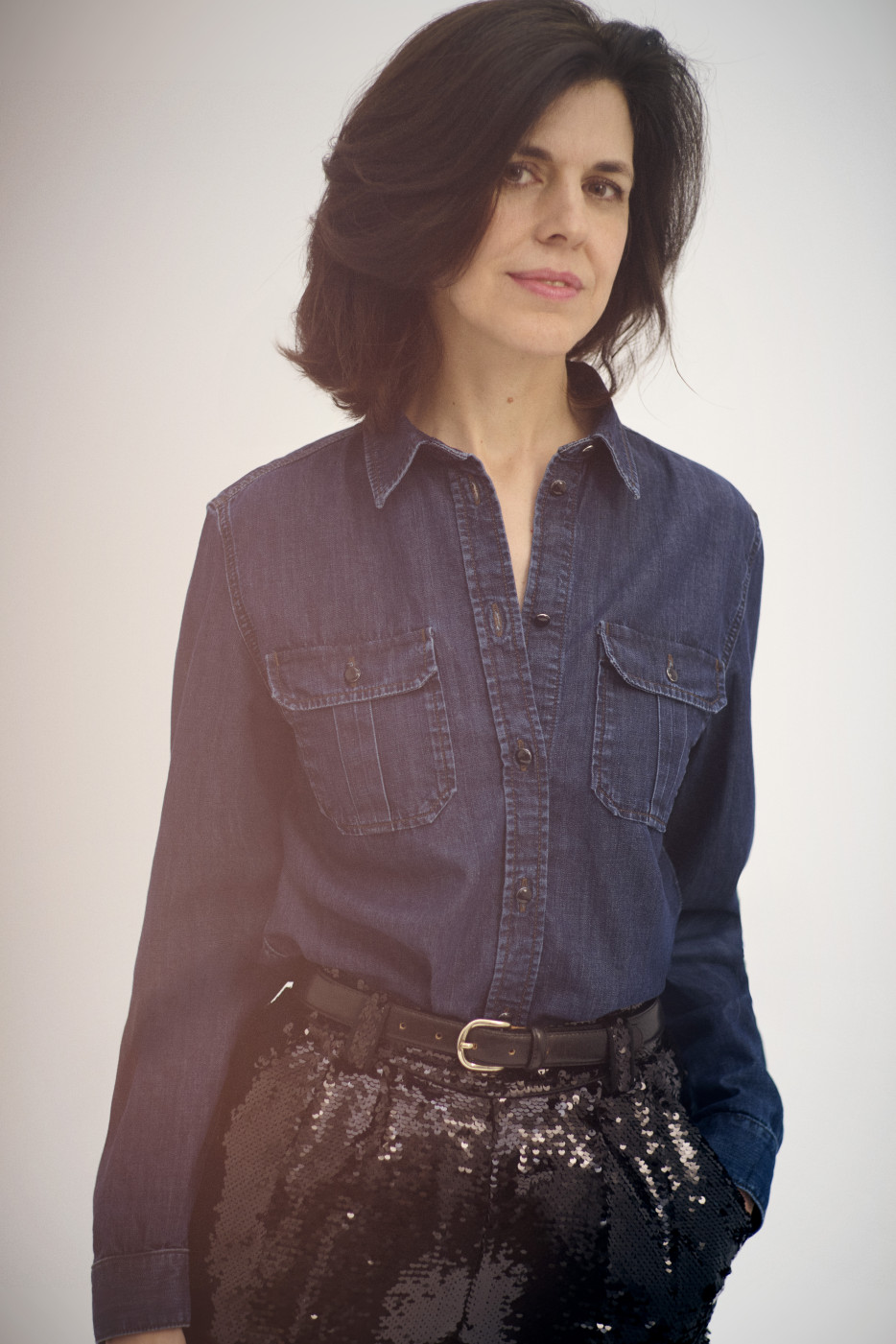
Courtesy: Bonpoint
Text: Lidia Ageeva


